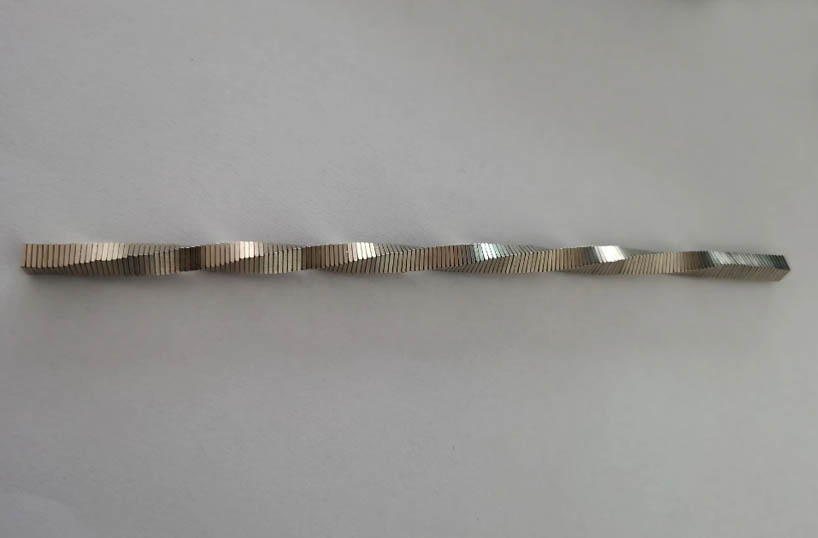NdFeB magnets are widely used in all kinds of industrial and consumer fields because of their strong magnetism properties. However, because NdFeB magnets themselves are easily affected by the external environment, they usually need to be plated to protect the surface, and in this article, the 3 most feared things in the plating process of NdFeB magnets will be introduced.
The first is moisture and oxidation. Neodymium magnets themselves are susceptible to moisture, especially before plating, and moisture can cause the surface of the substrate to oxidize and reduce the adhesion of the plating layer. The oxidized surface will affect the uniformity of the plating layer and even lead to delamination or blistering phenomenon.
The attached image shows a small flat square strong magnet plated with nickel

The second is acid and alkali corrosion. The effect of acid pickling and electrolyte used in the plating process on magnets should not be ignored. Excessive acid and alkali treatment may corrode the surface of the magnet and destroy its internal structure, leading to a decrease in magnetic properties and even affecting the bonding of the plating layer.
The third is high temperature. The high temperature resistance of neodymium magnets is limited, and the curing process in electroplating (heating the magnet in an oven to evaporate the solvent on the material surface, making the magnet surface denser and smoother) requires temperature control.
Electroplating of neodymium magnets is a complex process that involves knowledge from many disciplines such as material science, electrochemistry and thermodynamics. Humidity, acid and alkali corrosion and high temperature are the three most important issues to be concerned about in the plating process.
Learn about neodymium magnet plating colors and types: https://www.couragemagnet.com/neodymium-magnet-coating/
Other neodymium magnet plating knowledge;
Neodymium magnets can be single nickel plating?
Difference between nickel and chrome plating of magnets
 China Neodymium And Ferrite Magnets Manufacturer & Supplier
China Neodymium And Ferrite Magnets Manufacturer & Supplier 


